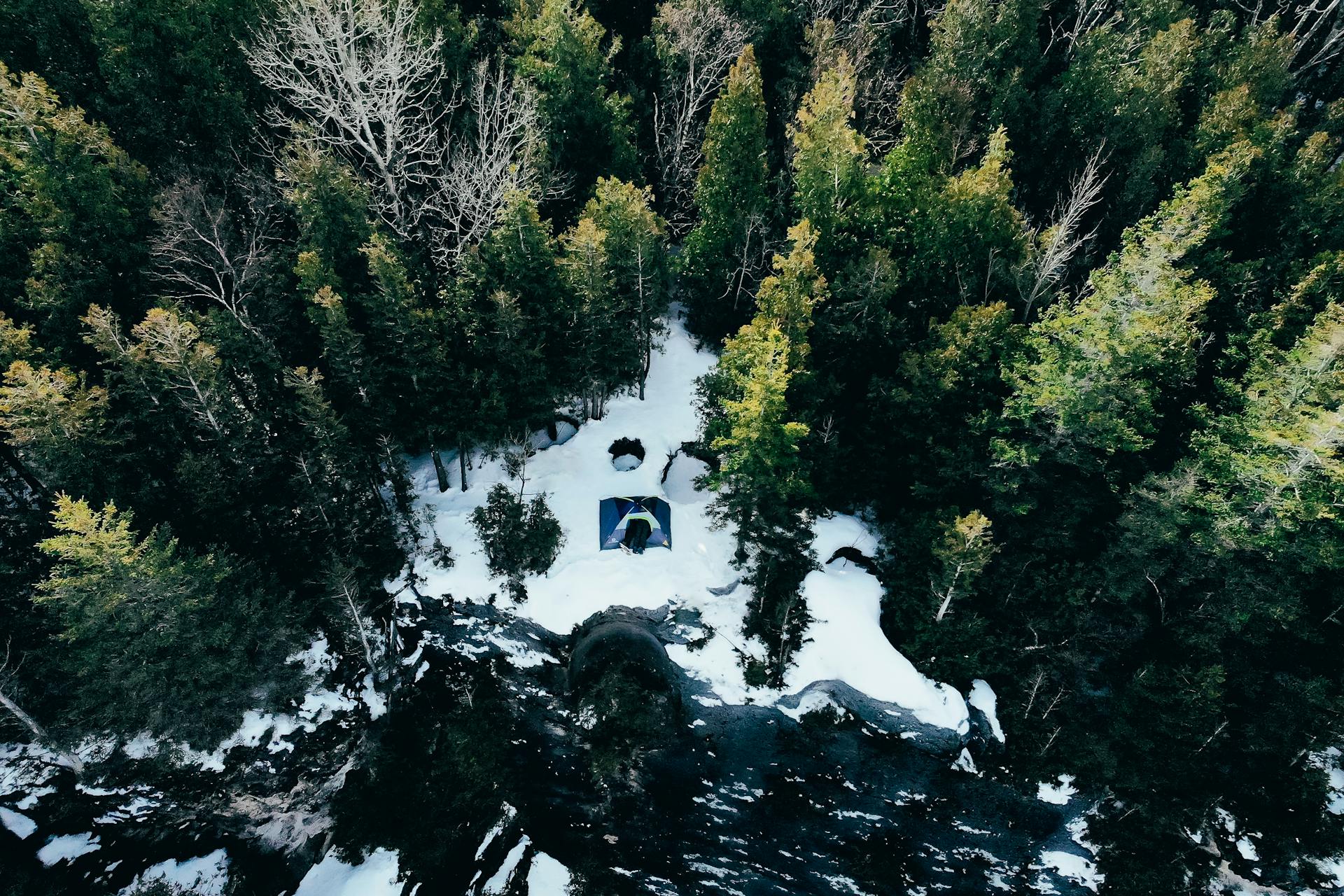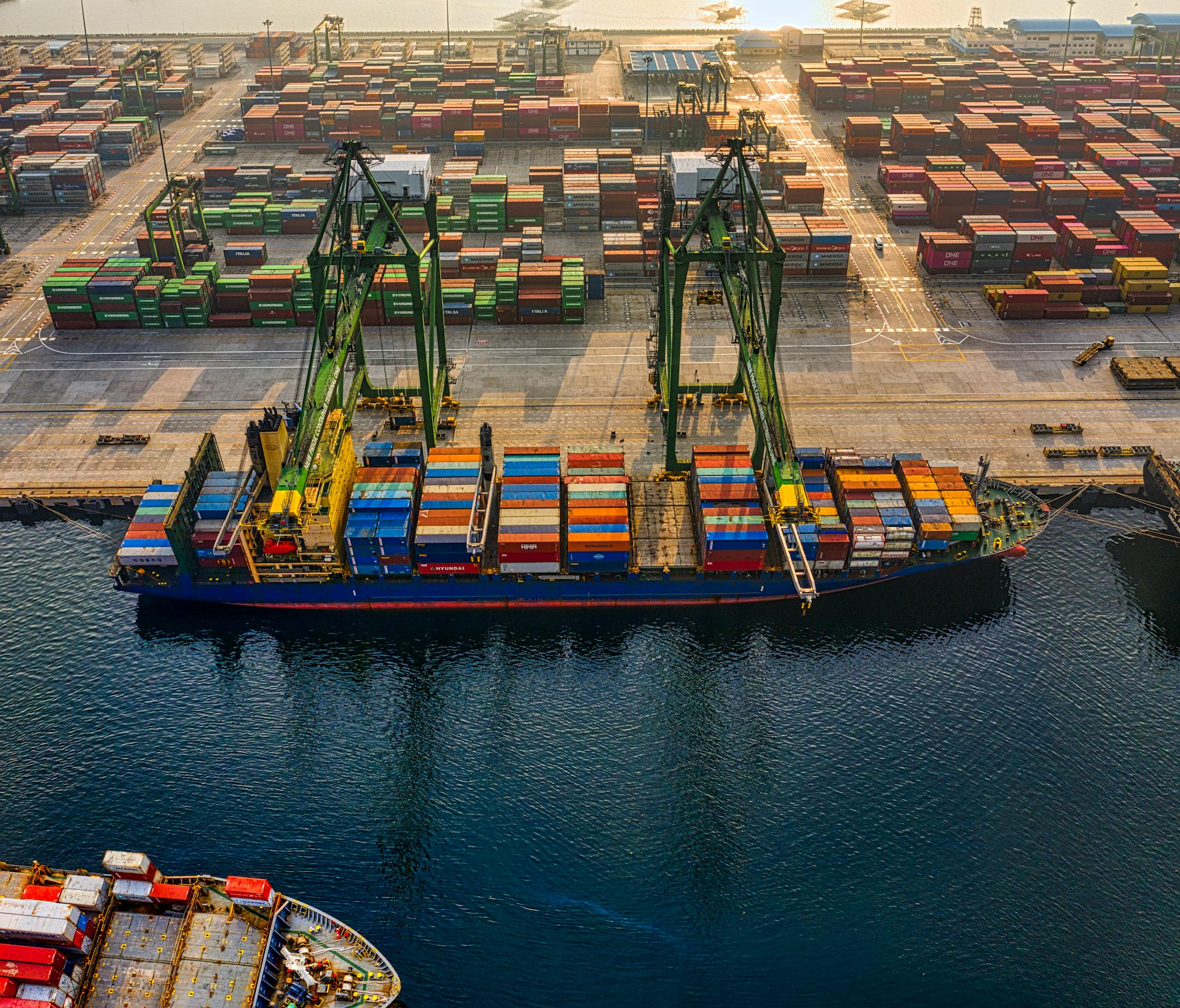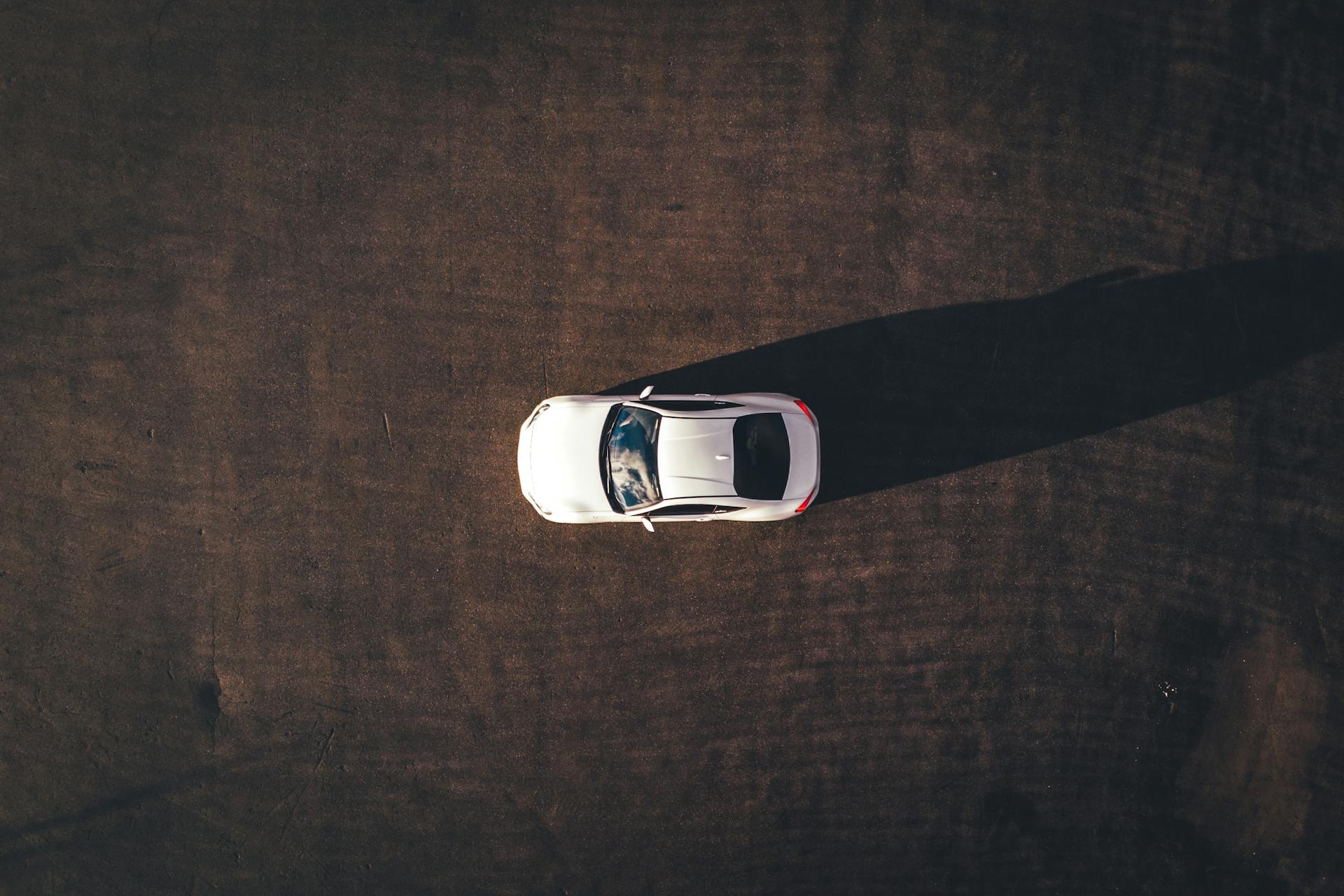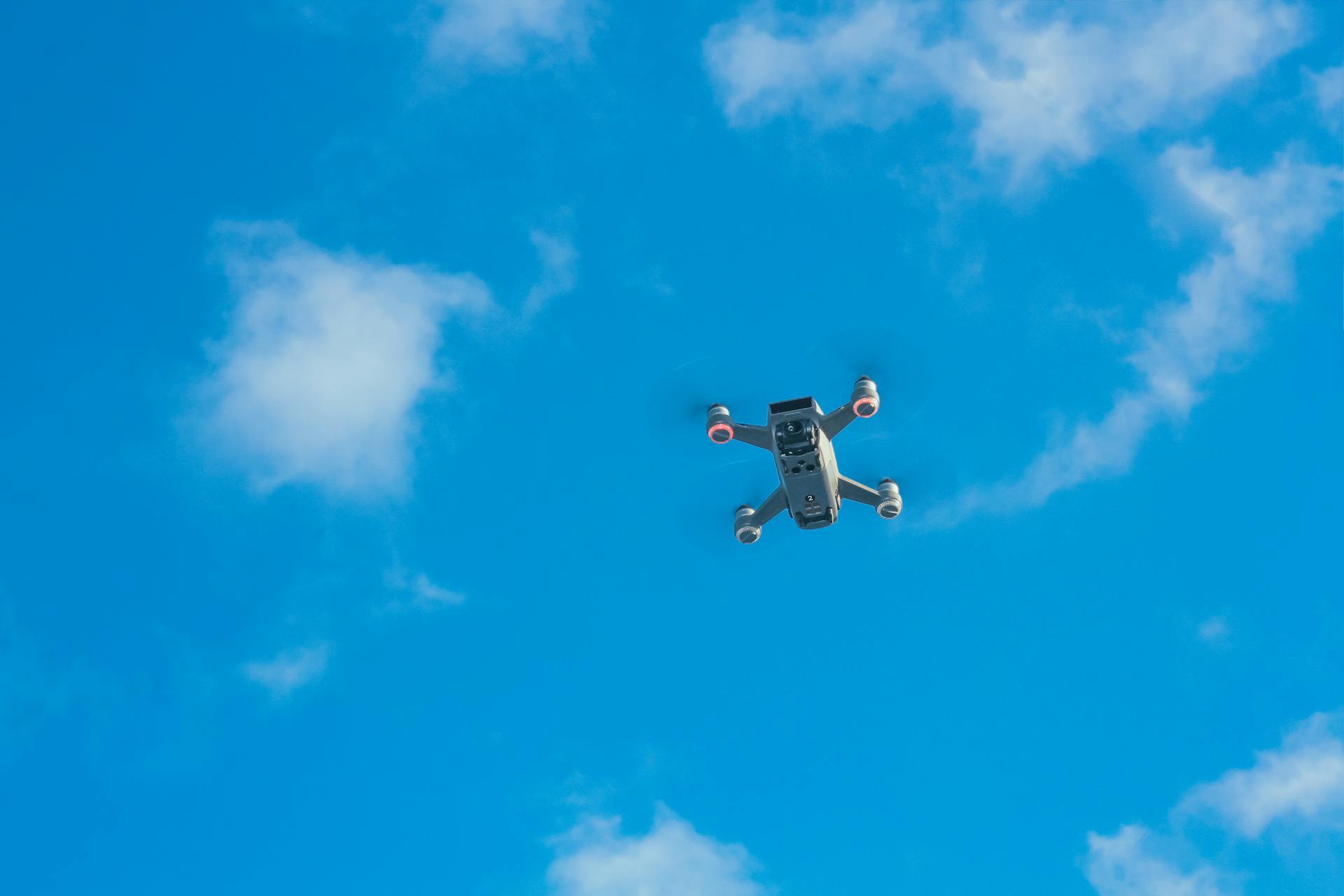
If you're planning to fly a UAV in Canada, you'll need to register it with Transport Canada. Registration is mandatory for all UAVs weighing over 250 grams.
To register your UAV, you'll need to provide some basic information, including the UAV's make, model, and serial number, as well as your contact details. This information will be used to identify your UAV and ensure you're complying with Canadian regulations.
You'll also need to obtain a Special Flight Operations Certificate (SFOC) if you plan to fly your UAV for commercial purposes. This certificate requires you to meet specific safety and operational requirements.
Intriguing read: Canada Rpas
Registration Requirements
In Canada, all drones except micro-drones must be registered with Transport Canada before they can be legally flown. This registration requirement was implemented in June 2019.
Drones that have a takeoff weight between 250 grams and 25 kilograms must be registered. This includes drones that are commonly used for recreational purposes.
Related reading: Turkish Uav Drones
Drones that weigh less than 250 grams do not require registration. On the other hand, drones that exceed 25 kilograms do not need to be registered, but they do require a special flight operations certificate.
To register your drone, you'll need to provide some basic information, including the purchase date (if applicable), make, model, weight, serial number, and type of drone. You'll also need to pay a registration fee using a payment method like Visa, American Express, MasterCard, or Interac Card.
Here's a summary of the required documents for registration:
- Purchase date of drone (if applicable)
- Make, model, weight, serial number, and type of drone
- Payment such as Visa, American Express, MasterCard, or Interac Card
Once you've submitted your registration, you'll receive a unique ID number that must be displayed on your drone at all times. This ID number will start with a "C-" and must be visible on your drone.
There Are Two Certifications: One Required
You need to get a drone pilot certification to fly a UAV in Canada, and there are two types: basic and advanced. The type of certification you need depends on where you plan to fly your drone.
If you won't ever need to fly in controlled airspace, over bystanders, or within 30 metres horizontally from bystanders, the basic certification is all you need. This is the case if you're flying in uncontrolled airspaces, 30 metres away from people, three nautical miles from an airport, and one nautical mile from a heliport.
To get a basic certification, you must pass an online exam. This is a requirement for photographers seeking a basic license for commercial, architectural, and hospitality photoshoots.
Here's a summary of the two certifications:
If you need or want to do any of the things forbidden to basic pilots, you need an advanced certification. This includes flying in controlled airspace, over bystanders, or within 30 metres horizontally from bystanders.
Safety and Compliance
Safety and Compliance are crucial when flying a drone in Canada. To stay safe and legal, you need to follow some basic rules.
First, register your drone with Transport Canada. This will give you a unique ID number that you'll need to display on your drone.
To register, you'll need to upload a photo of the identification plate from each drone, storing the serial number in the system.
You'll also need to have your drone pilot certificate on you, either in physical form or on your phone.
Here are some key things to keep in mind:
- Register your drone with Transport Canada.
- Fly only within visual line of sight.
- Stay below 122 metres (400 feet) in the air.
- Stay away from emergency operations, advertised events, and manned aircraft.
- Respect the privacy rights of others when you fly.
- Have your drone pilot certificate on you, if required.
If your drone weighs more than 250 grams, you'll need a license to fly it in Canada. This is a requirement for all professional commercial, architectural, and hospitality photoshoots.
Travel and Operations
Before you fly your drone for work or recreation, it's crucial to know the rules about where you can and cannot fly your drone.
To stay informed, you can check out Drone Pilot Training, which provides certification training and keeps you up-to-date on any changes in Transport Canada's rules.
It's essential to be aware of Transport Canada's drone rules to avoid any issues or fines.
Canada's Future
Canada's Future is looking bright for drone enthusiasts. The latest technology news suggests that advancements in drone design and functionality will continue to improve in the coming years.

Drone regulations in Canada are also evolving to keep up with the growing industry. This means that drone operators will need to stay informed about updates to ensure they remain compliant.
The Canadian government has been actively working to establish a clear framework for drone use, including rules for remote identification and tracking. This will help to promote safe and responsible drone operations.
Drone pilots can expect to see more opportunities for commercial use, including package delivery and aerial photography. These applications will require careful planning and execution to ensure safe and efficient operations.
You might like: Use of UAVs in Law Enforcement
Canada Travel
If you're planning a trip to Canada, it's essential to know the rules about flying drones in the country. You can fly your drone in most places with the right pilot certificate and authorization.
First, familiarize yourself with the interactive map in the Nav Drone app to find out where you can and cannot fly your drone. This will save you from getting into trouble with authorities.
Areas to avoid include airports and heliports, where you must stay at least 5.6 km (3 nautical miles) away unless you have an advanced certificate and airspace authorization. National parks are also off-limits, and you'll need permission from Parks Canada before flying your drone in any park.
Emergency sites, such as fires or police operations, are also no-fly zones. You must keep your drone 9.3 km (5 nautical miles) away from any forest fires to avoid interfering with water bombers. Additionally, avoid flying near or over advertised events like concerts or sporting events.
Here's a summary of areas to avoid:
- Airports and heliports: 5.6 km (3 nautical miles) away
- National parks: Requires permission from Parks Canada
- Emergency sites: 9.3 km (5 nautical miles) away from forest fires
- Advertised events: No flying near or over
If you're planning to fly your drone for work or recreation, it's crucial to know the rules about where you can and cannot fly your drone.
Penalties and Restrictions
Flying a drone in Canada comes with some serious responsibilities. If you violate the Transport Canada drone rules, you can expect more serious consequences than ever before.
The new rules specify fines as high as $25,000 for flying your drone in a way that endangers people or aircraft. This is a significant increase from previous penalties, and it's essential to be aware of the risks involved.
Transport Canada and local police have the authority to investigate and enforce the drone laws in Canada. They take these regulations seriously, and you should too.
If you break the rules for flying a drone in Canada, you may face serious consequences. Depending on the severity of the violation, you may face fines ranging from $1,000 to $15,000, or even criminal charges such as mischief, trespassing, voyeurism, or endangering aviation safety.
Here's a summary of the possible penalties:
- Fines ranging from $1,000 to $15,000
- Criminal charges such as mischief, trespassing, voyeurism, or endangering aviation safety
It's crucial to know the rules about where you can and cannot fly your drone before taking to the skies.
Becoming a Pilot in Canada
To become a drone pilot in Canada, you'll need to get certified. The good news is that you no longer need a Special Flight Operations Certificate for commercial applications, just your basic or advanced certification if you're a Canadian citizen.
If you're a Canadian citizen, your drone weighs over 25 kg, or you're not a permanent resident or citizen of Canada, you'll still need the certification. This might seem like a lot to keep track of, but it's actually pretty straightforward.
You'll need to be at least 16 years old to get an advanced certification, and 14 for a basic certification. Younger pilots can still fly, but they'll need to be supervised by someone with all the proper certification.
If you're planning to fly a drone for commercial purposes, such as taking photos for a company, you'll need to be licensed. This means your aerial photographer will need to carry their drone pilot certificate whenever they fly.
To get started, you can check out Drone Pilot Training, which offers basic certification training and tips for making the most of your drone flying experience. They can also help you stay up-to-date with any changes in the rules and regulations from Transport Canada.
See what others are reading: Remote Pilot Small Unmanned Aircraft Systems Study Guide
Frequently Asked Questions
Can you fly a drone under 250 grams anywhere in Canada?
Yes, micro drones under 250 grams have relatively few restrictions in Canada, but it's essential to note specific guidelines for safe operation. For more information on where and how to fly your drone, check the Transport Canada regulations.
Sources
- https://www.airdberlis.com/insights/publications/publication/drone-regulation-in-canada-proposed-rules-for-bvlos-and-medium-size-drones
- https://www.victoryuav.ca/2020/09/transport-canada-drone-rules-the-6-absolutely-essential-things-to-know/
- https://flightphoto.ca/rules-for-flying-a-drone-in-canada
- https://shawntalbot.com/drone-laws-in-canada-what-to-know-before-your-aerial-photoshoot/
- https://dronestripe.com/drone-regulations-in-canada-do-you-need-to-register-your-drone/
Featured Images: pexels.com


